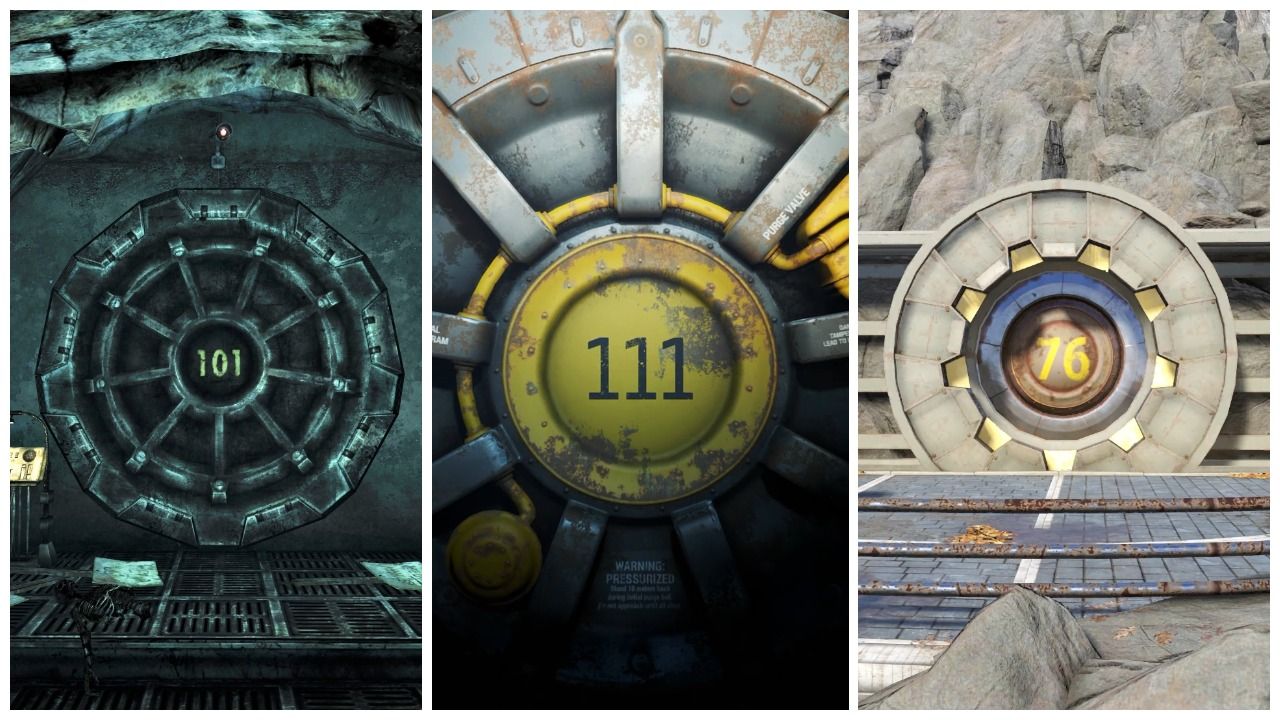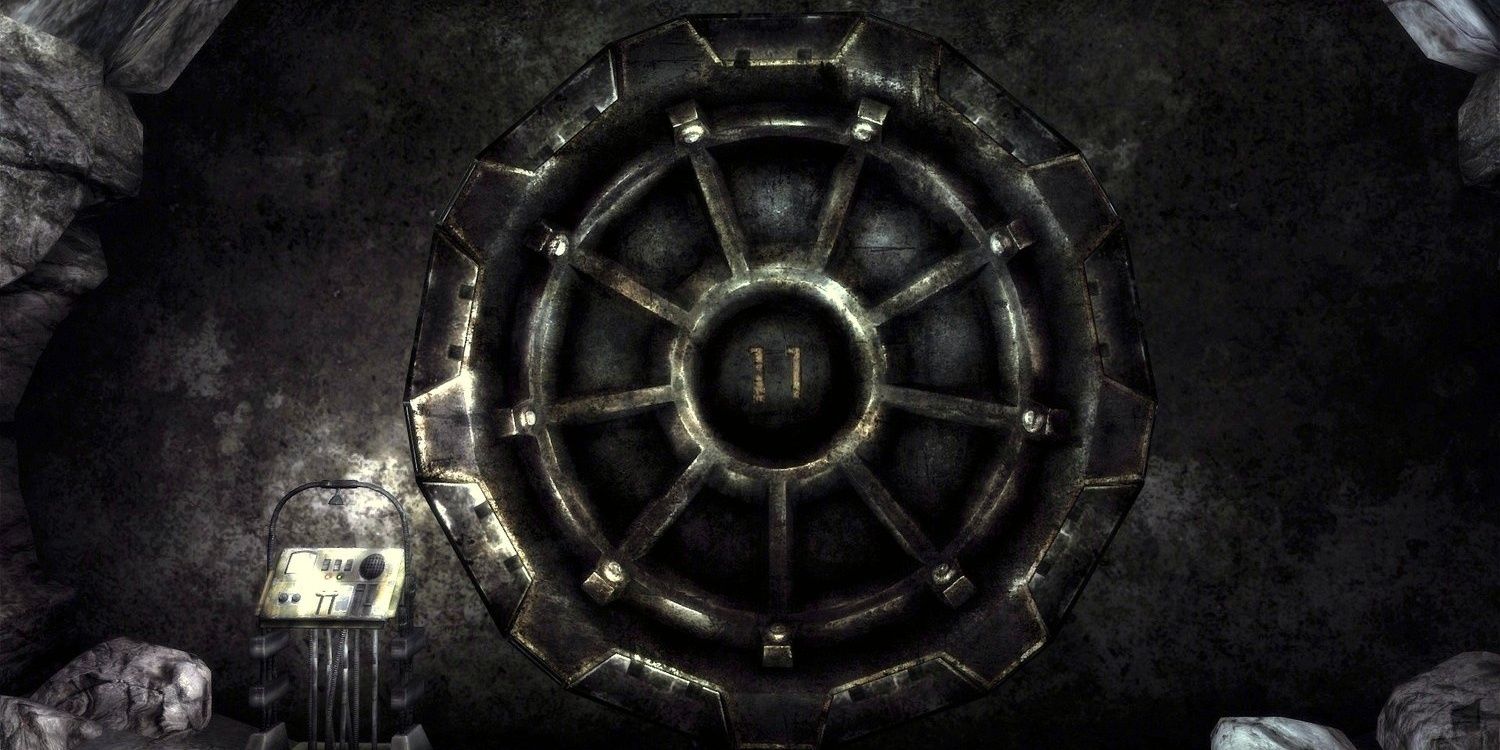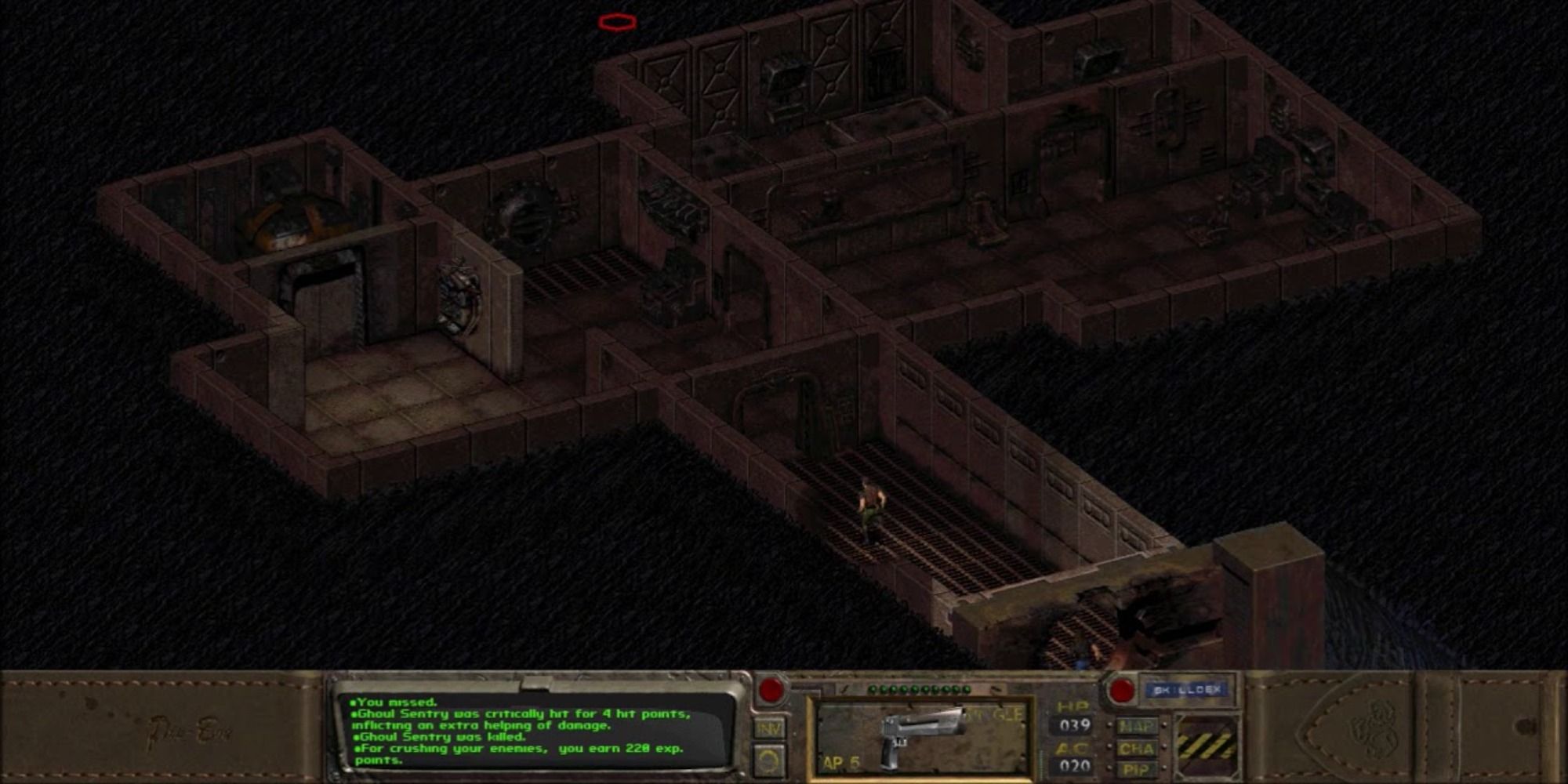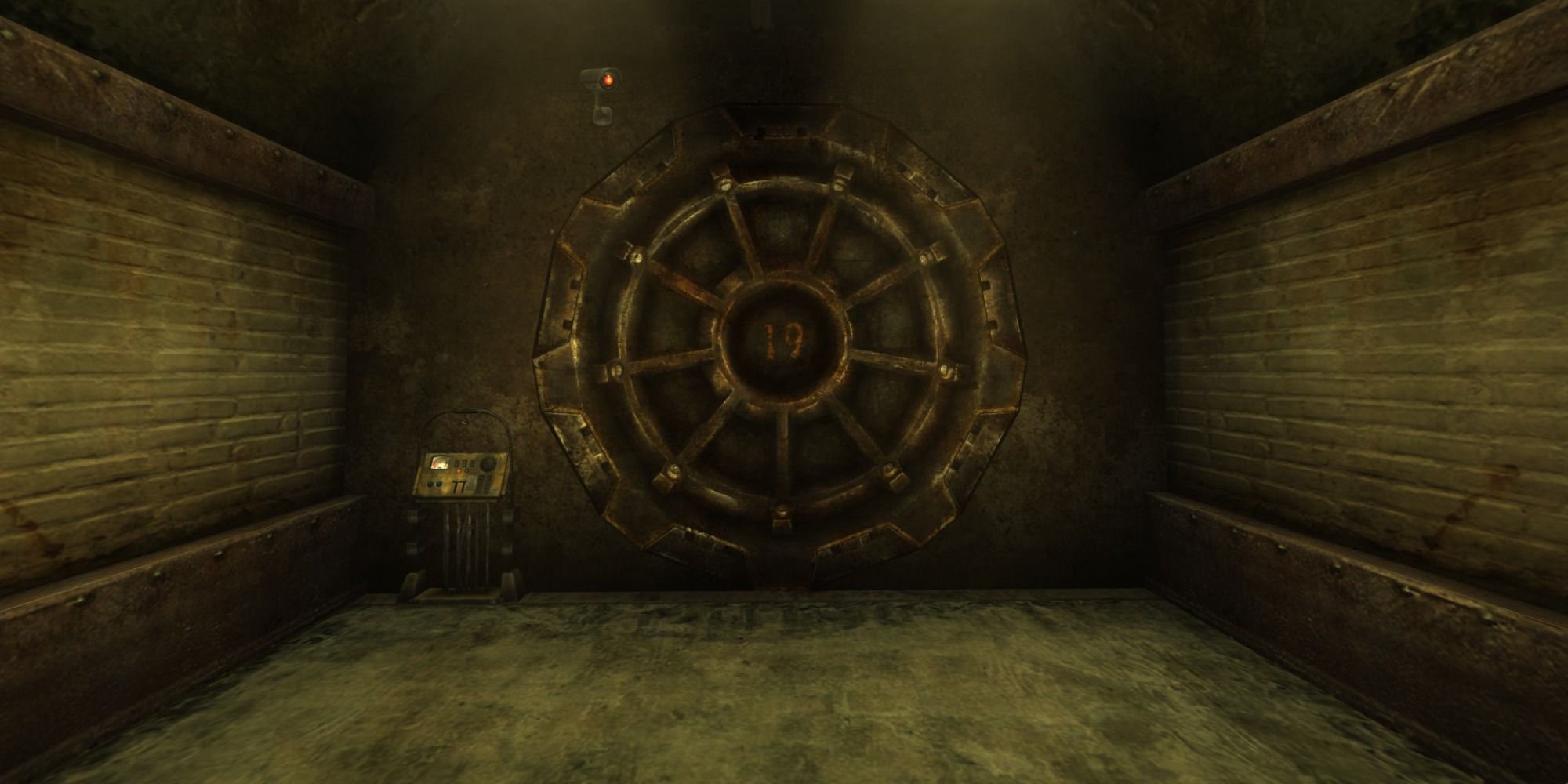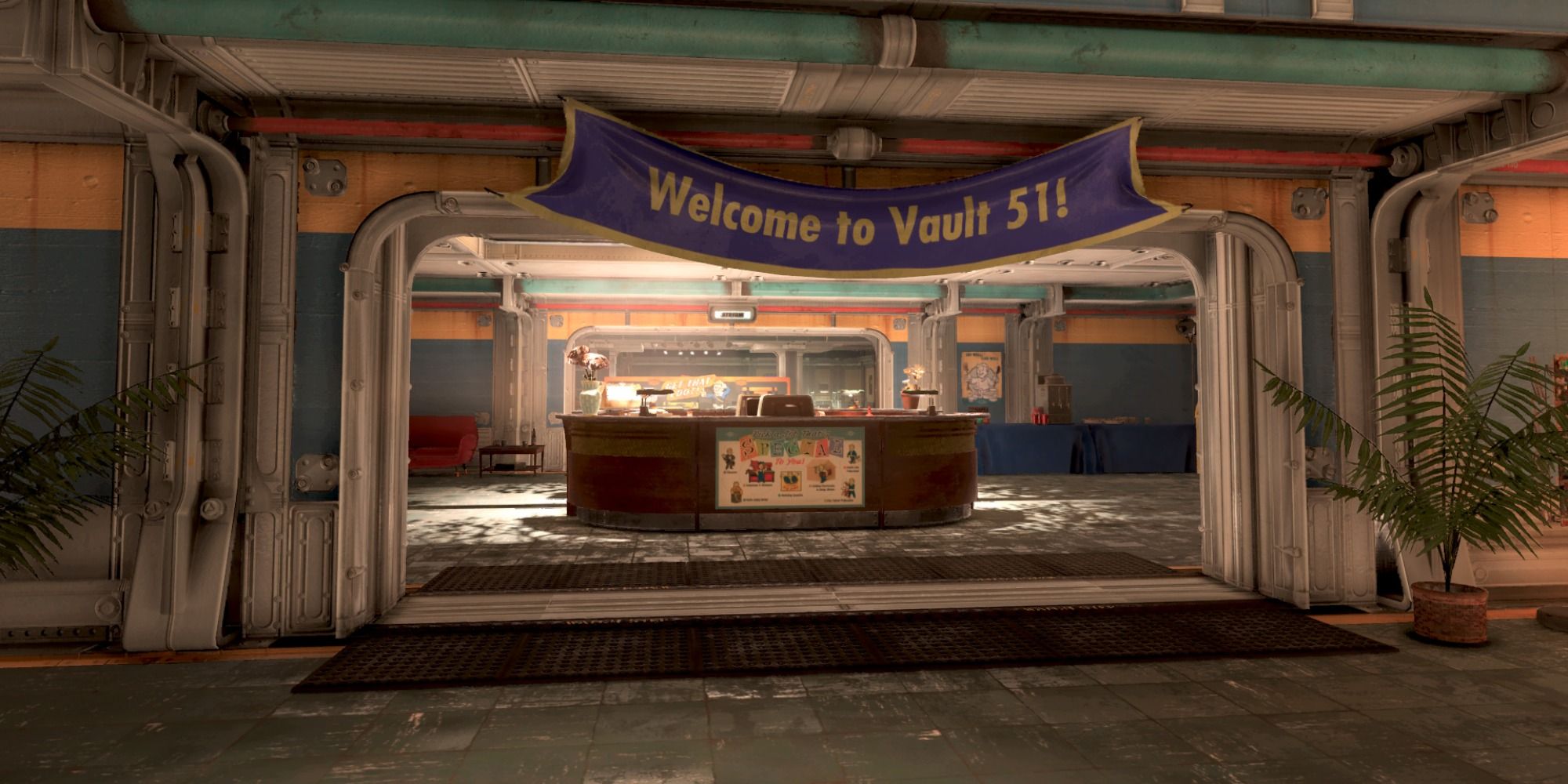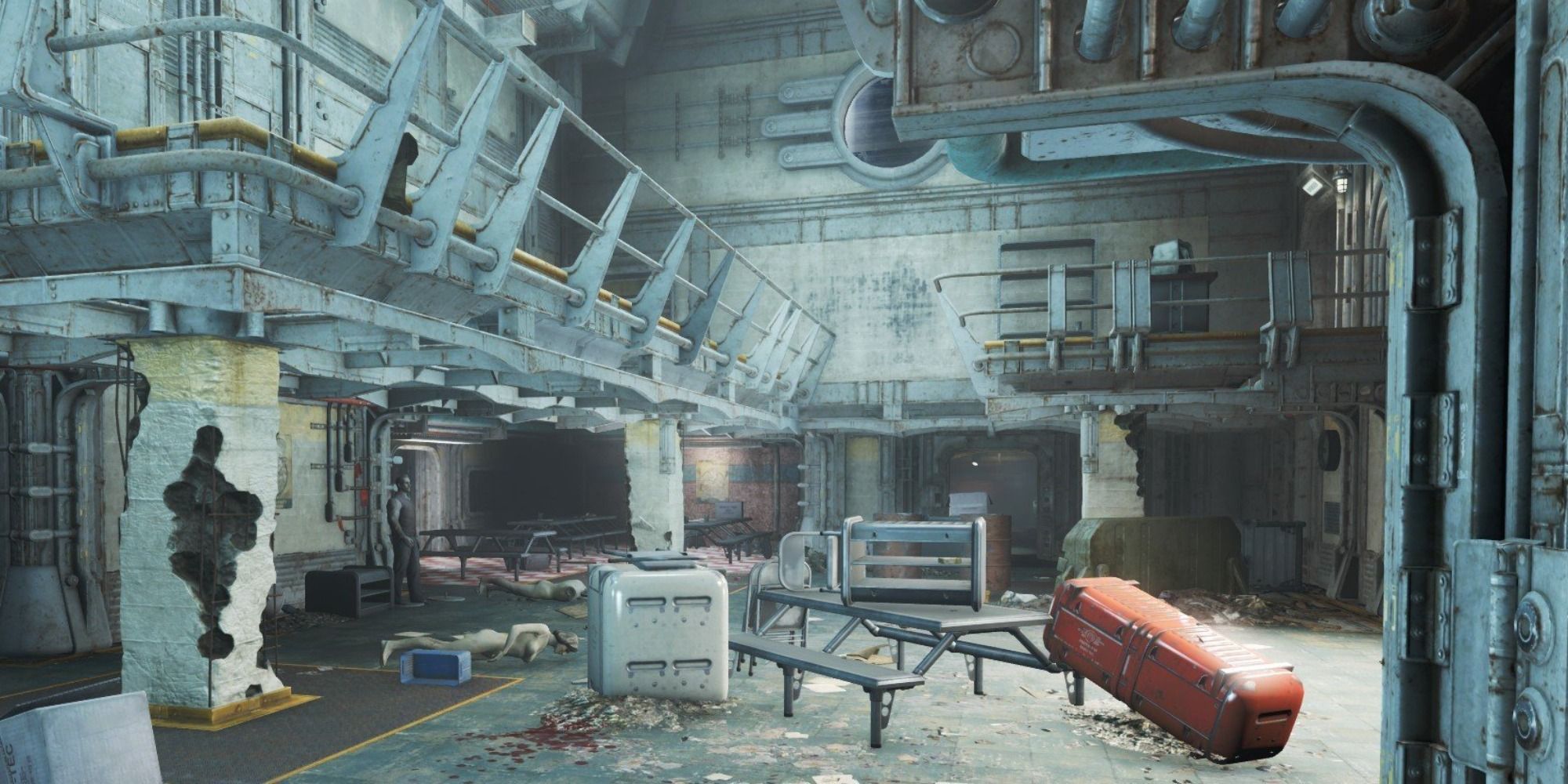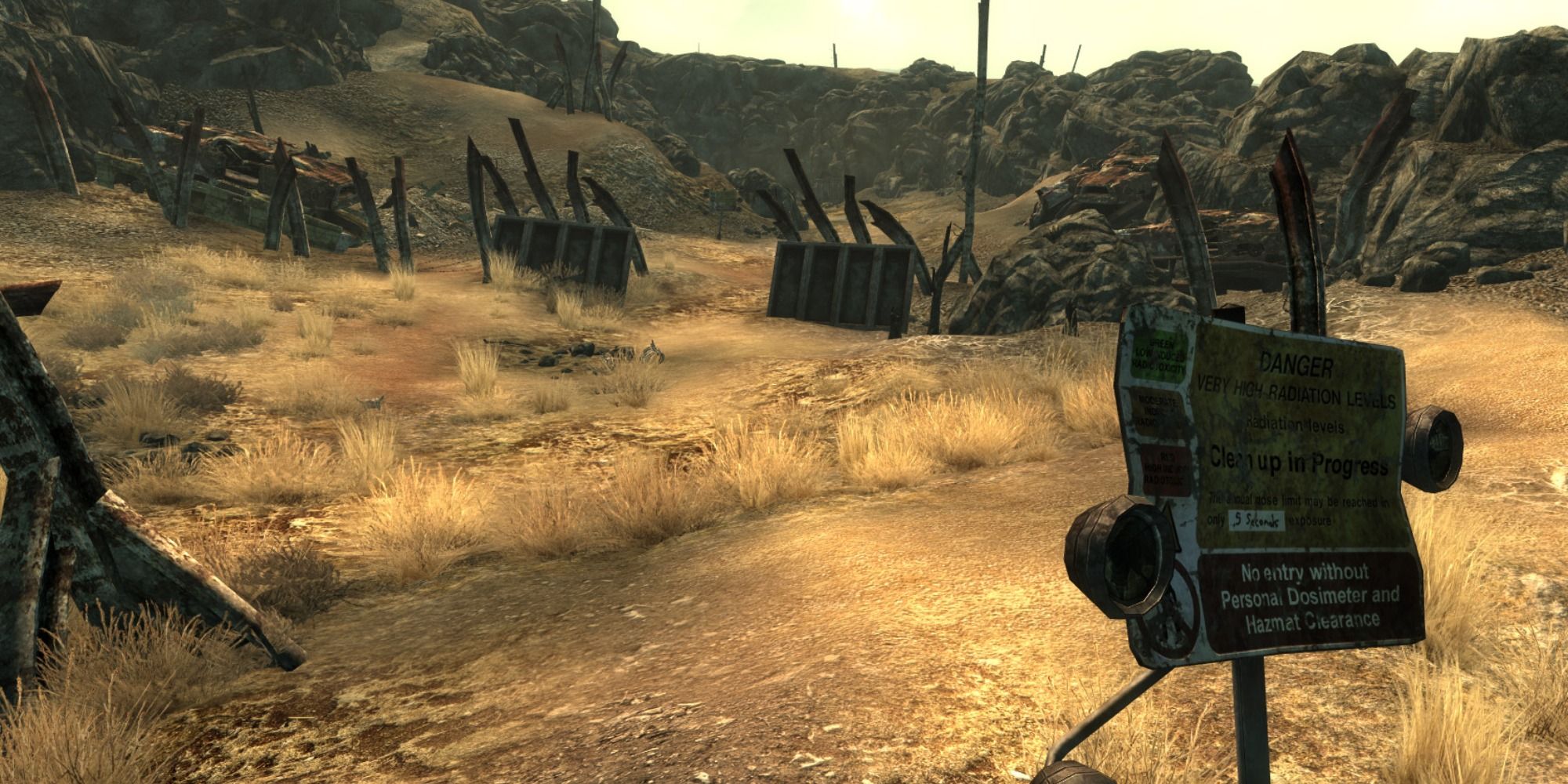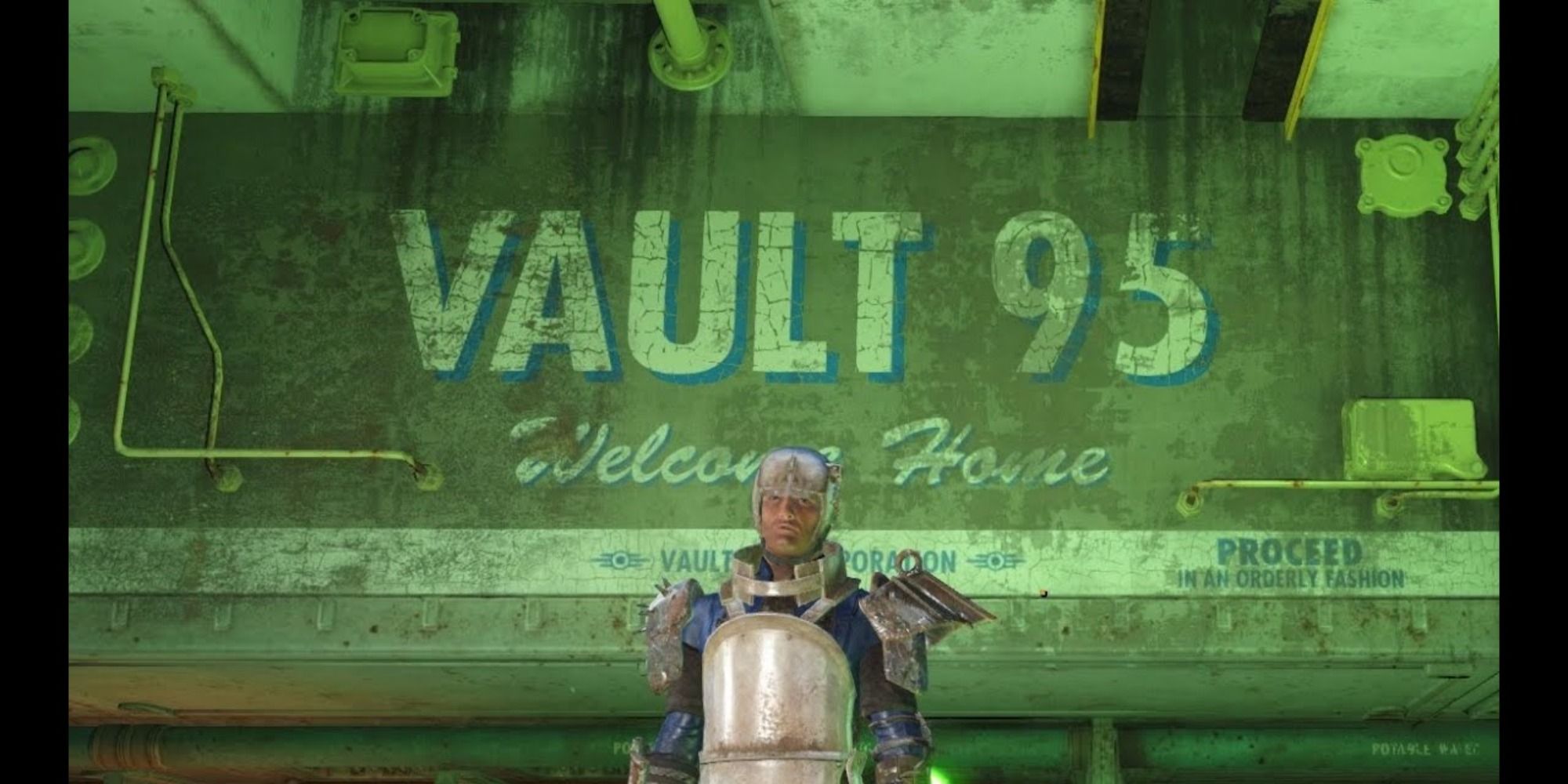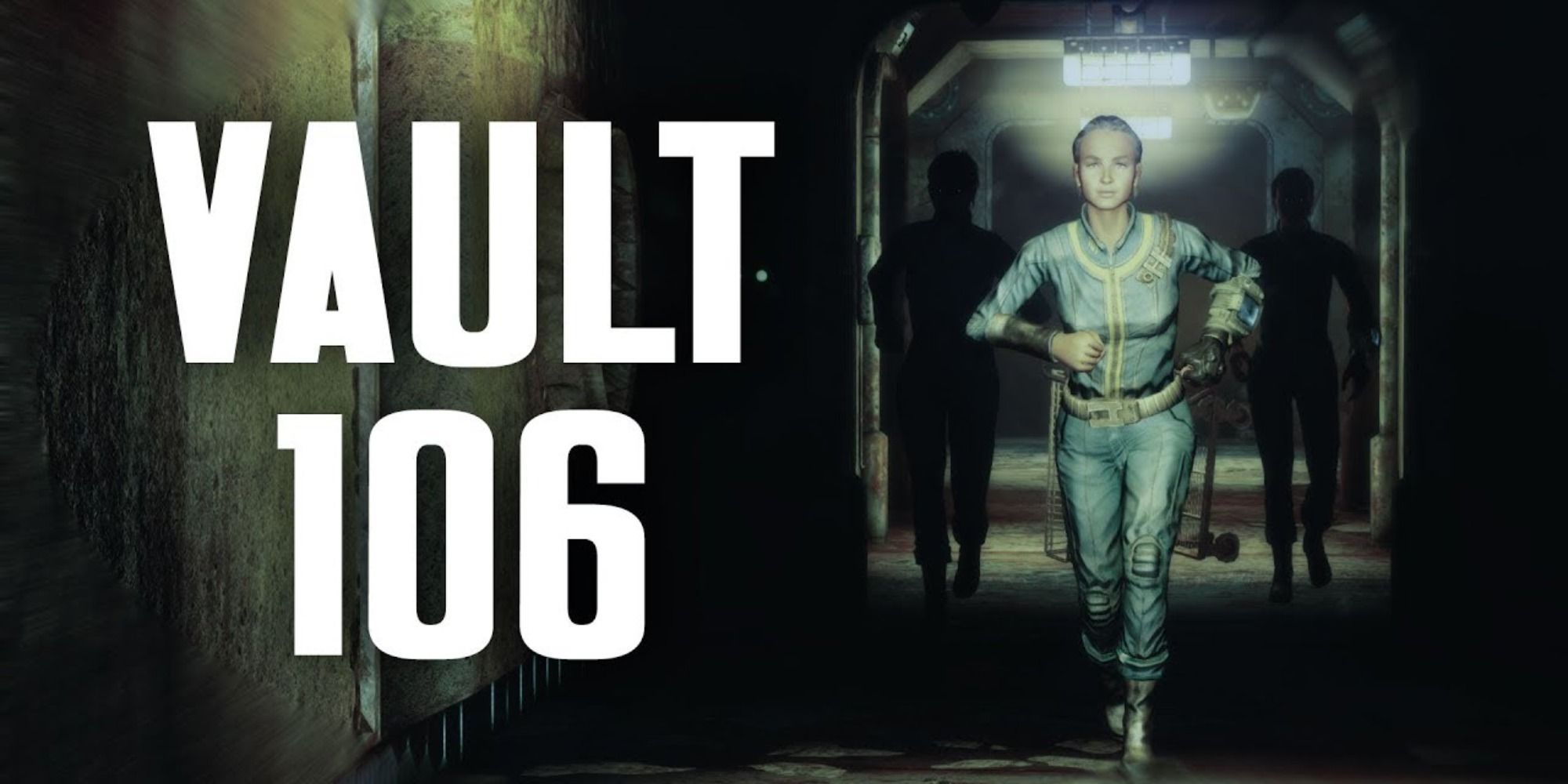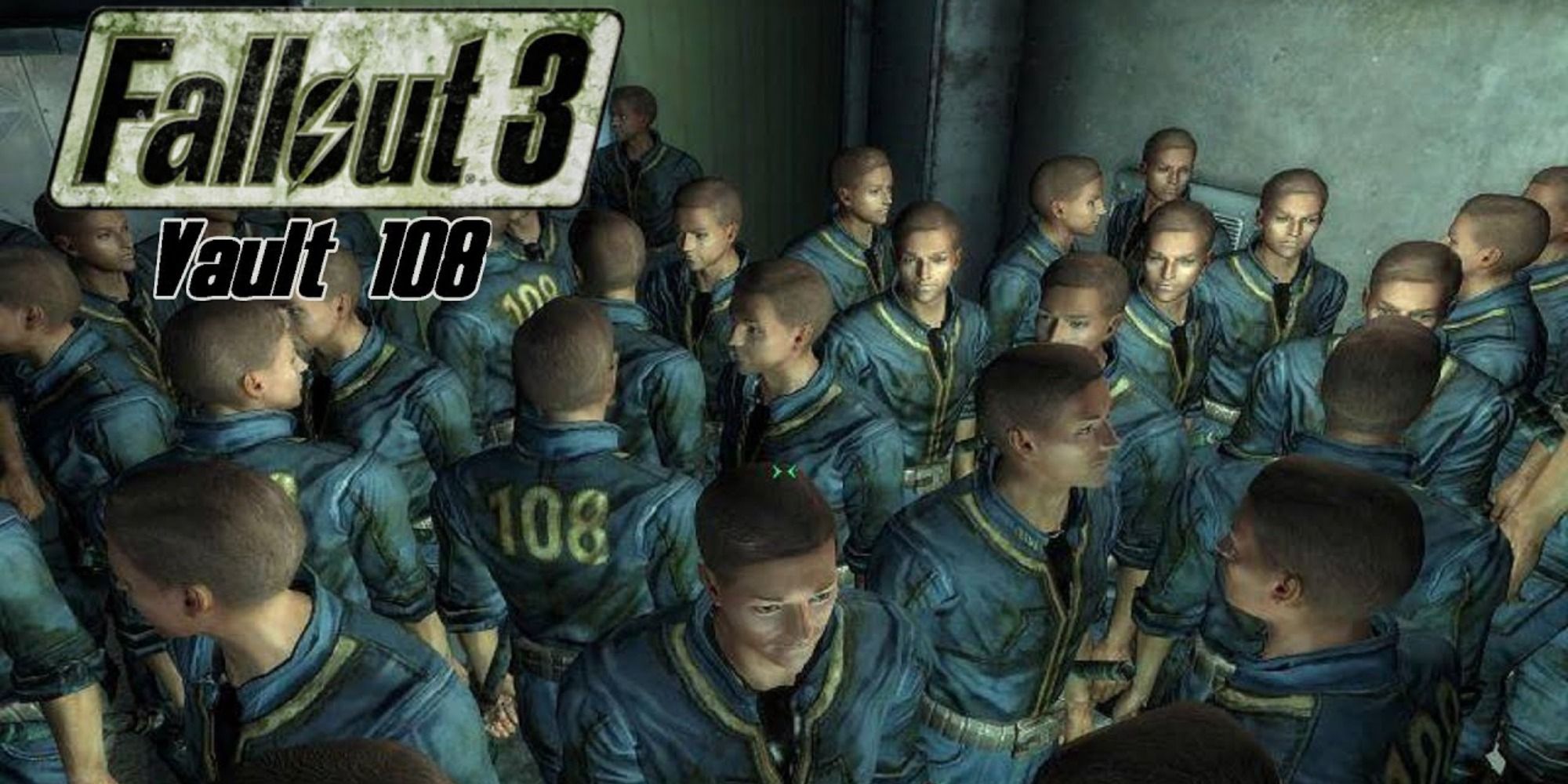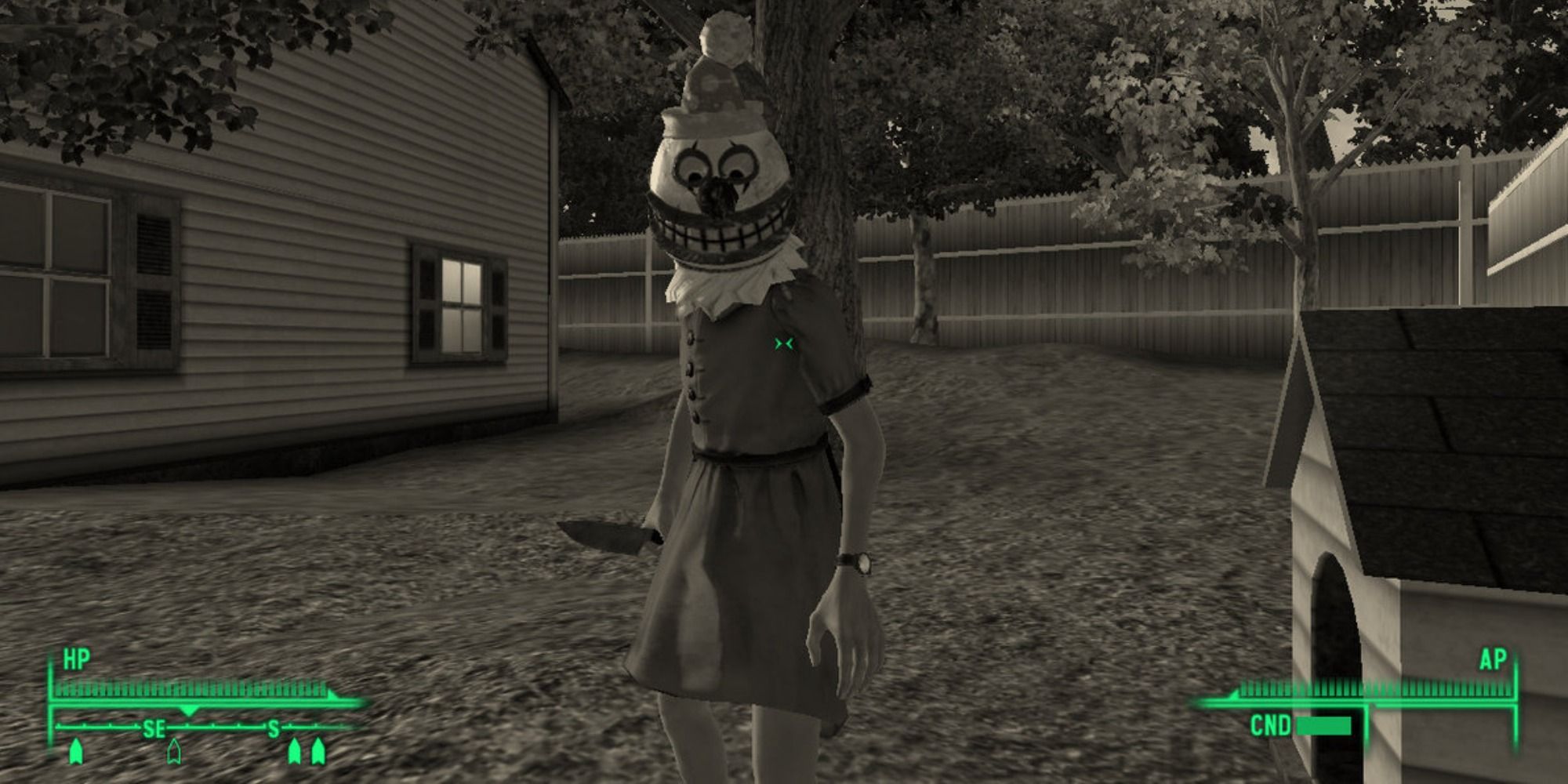Amazon Prime's Fallout series hasn't confirmed its plot direction. Luckily, Fallout's vaults have some of the most sinister yet intriguing narratives or backstories to grace video games. Passing up on some of the most well-crafted lore in the world of Fallout brings seems like a potential missed opportunity.
Vault-Tec appears to have saved many, but not without morbid experiments worming their way into people's salvation. While some of these dwellers survived the initial nuclear fallout, many of them never lived to tell of their supposed saviors for reasons beyond general comprehension. Here are some prime examples of vault lore that would make great television.
10 Vault 11
Fallout New Vegas's Vault 11 was home to a social experiment on one's human nature. The experiment focused specifically on people's ability to sacrifice themselves for others and how successful this ideal can be when held above all else.
It seems relatively positive, right? However, soon after the vault doors sealed shut, the inhabitants were informed of the cost of this specific vault. Every year one person must be selected and sacrificed, or the vault's computer would kill every dweller. The overall system progressed from voting to random chance, and eventually to a widespread refusal. After many sacrificial deaths, the dwellers stood their ground — only to be congratulated for their bravery. They were left to carry the moral weight of having sacrificed so many people for no reason at all.
9 Vault 12
The original Fallout's Vault 12 housed a study on the nuclear fallout's radiation. To observe this, the designers of the vault ensured that the vault's door would not seal correctly, allowing radiation to unknowingly creep in and radiate its inhabitants as they lived.
Many of the vault's inhabitants left in 2083, six years after their initial arrival date. Many died from the radiation, but those who lived became ghouls due to an aptly named process called ghoulification. Those who stayed formed the infamous ghoul utopia, Necropolis.
8 Vault 19
Fallout New Vegas's Vault 19 was a test on segregation and paranoia. The vault was split into two groups, red and blue. While vaults typically have a single overseer, this one uniquely had two, one for each group.
Throughout the experiment, odd happenings would take place and rumors would be spread. In truth, each side was innocent except for their respective overseers, acting as Vault-Tec orders demanded. The overseers would start rumors and create weird anomalies for the other group to drive paranoia and fear. Each side would pin the blame on the other, and tensions would continue to grow.
7 Vault 51
Fallout 76's Vault 51 was uniquely tasked with finding the vault's overseer among the inhabitants after they entered. A super-computer known as a ZAX unit was entrusted with devising means to do this with the vault's dwellers. The ZAX unit had a member of maintenance assigned to it, but beyond that, it was not given any guidance on how to proceed.
After failed many failed candidacies, the ZAX unit decided the residents should fight to the death. After everyone fought for their lives, a single person remained and became the overseer of an empty vault.
6 Vault 75
Fallout 4's Vault 75 focused on human genetics and refining it for survival in the wastes. This particular vault was designated for young students and their families. Yet, in a malicious turn, families were separated from their children upon arrival, and parents were executed by vault staff.
Upon turning 18, subjects were either brought in to join the science team or "celebrated" and killed if they didn't add sufficient acceptable genes to the pool. After several generations of tests and torture, the findings were never conclusive and were ultimately destroyed.
5 Vault 87
Fallout 3's Vault 87 was an FEV (or Forced Evolutionary Virus) research facility. The vault's inhabitants were subjected to the FEV and locked away in cells. Scientists then observed the changes over several weeks.
After a few weeks, Vault 87 introduced the first super mutants and other creatures to the Capital Wasteland. Not even a year into testing, the newly created super mutants overthrew the understaffed security and escaped the vault. From there on, super mutants roamed and became a staple menace in the wastes.
4 Vault 95
Fallout 4's Vault 95 was a test on the resiliency of drug addicts. Save for one secret Vault-Tec employee, the vault was filled with only drug addicts. An overseer would be assigned periodically at the inhabitants' discretion and rehab programs would ensue.
After five successful years of rehab practices, the undercover employee revealed a hidden treasure trove of drugs. Days later, only one dweller remained — not only sober, but alive. Everyone else gave in to addiction once more or killed others in search of a fix.
3 Vault 106
Fallout 3's Vault 106 was an experiment focused on psychoactive drugs and the potential insanity that ensues. The vault's air filtration system was pumped full of the drugs ten days after dwellers entered. Hallucinations started quickly, and the security staff members were ordered to tell the inhabitants that everything was in order.
The vault was discovered in a large cave where the drugs were still being pumped in. Bodies littered the vault floor with mini-nukes and other menacing items scattered about, detailing the inhabitants' attempt to escape.
2 Vault 108
Fallout 3's Vault 108, or Vault of Gary, was designed as a test of leadership. The vault's designated overseer had terminal cancer and was given 40 months to live. On top of that, the vault was destined to have an electrical power malfunction after 240 months. It lacked conventional forms of entertainment but had an overstocked armory — an obvious recipe for disaster.
The vault's science team leaned heavily into cloning experiments after leadership was awry. The clones, all named Gary, repeatedly developed hostile and violent tendencies toward the non-cloned vault denizens, even going so far as to injure a scientist. The clones were then scheduled to be disposed of. This caused an uproar among them, and they ultimately overthrew and killed every non-cloned inhabitant within the vault.
1 Vault 112
Fallout 3's unique Vault 112 consisted of one main room. Every dweller was essentially placed in stasis and connected to a virtual reality world that promised to deliver the perfect virtual life in perpetuity. The head of the simulation, Dr. Stanislaus Braun, became bored and utilized his simulation to torture the other dwellers as he saw fit.
The original premise contained several worlds for the inhabitants to live out, but Braun favored one the most. The simulation of choice was titled Tranquility Lane — a simulated version of an idyllic pre-war suburb .

